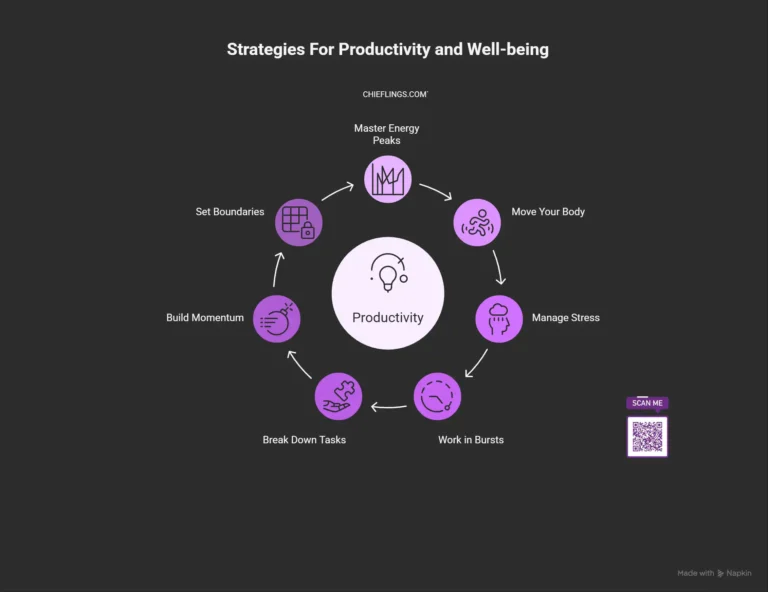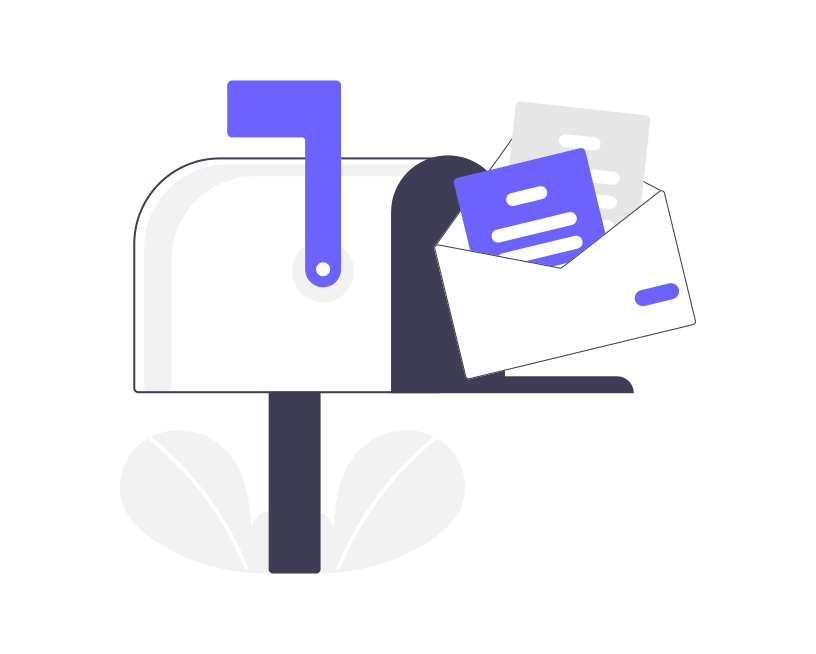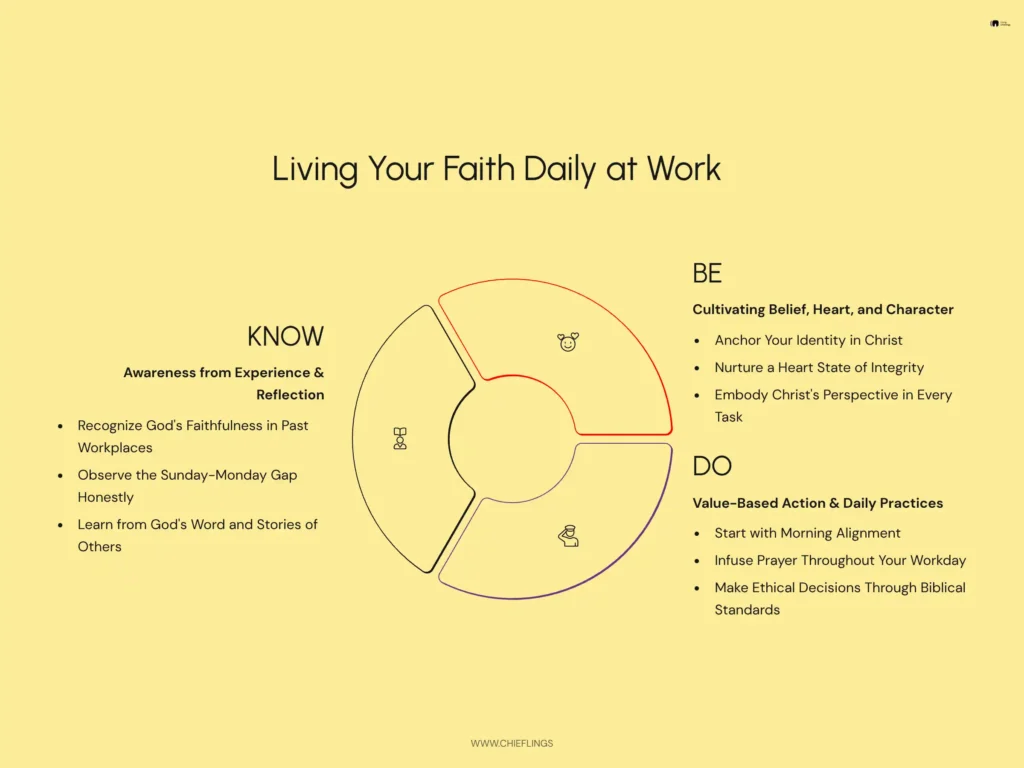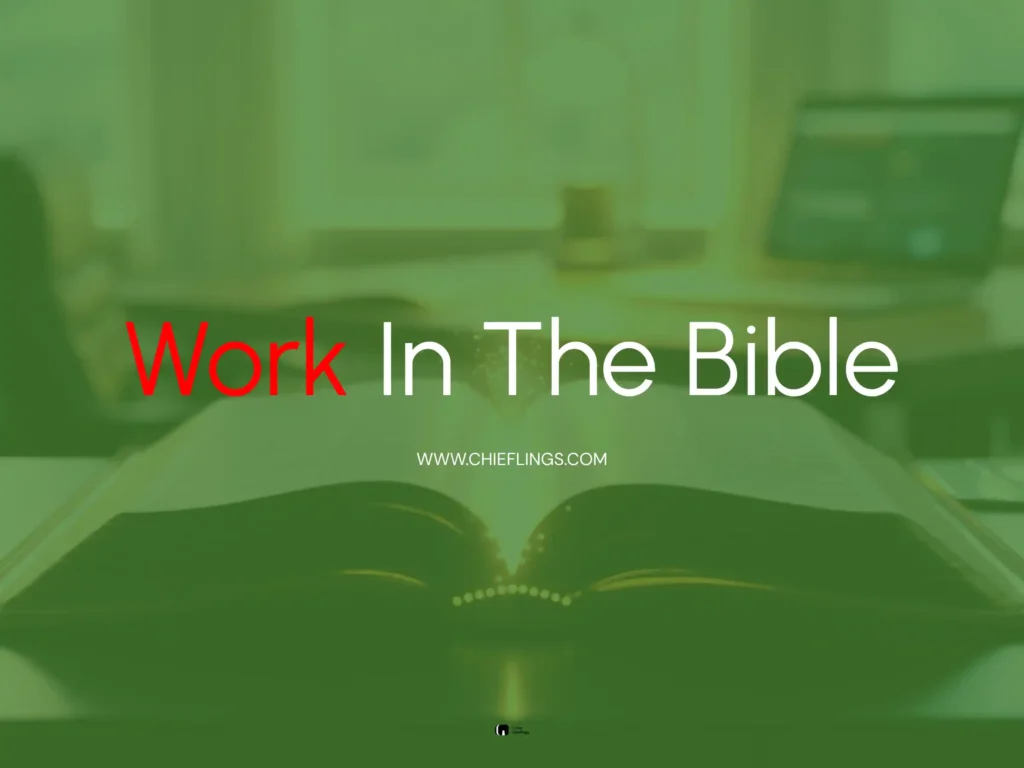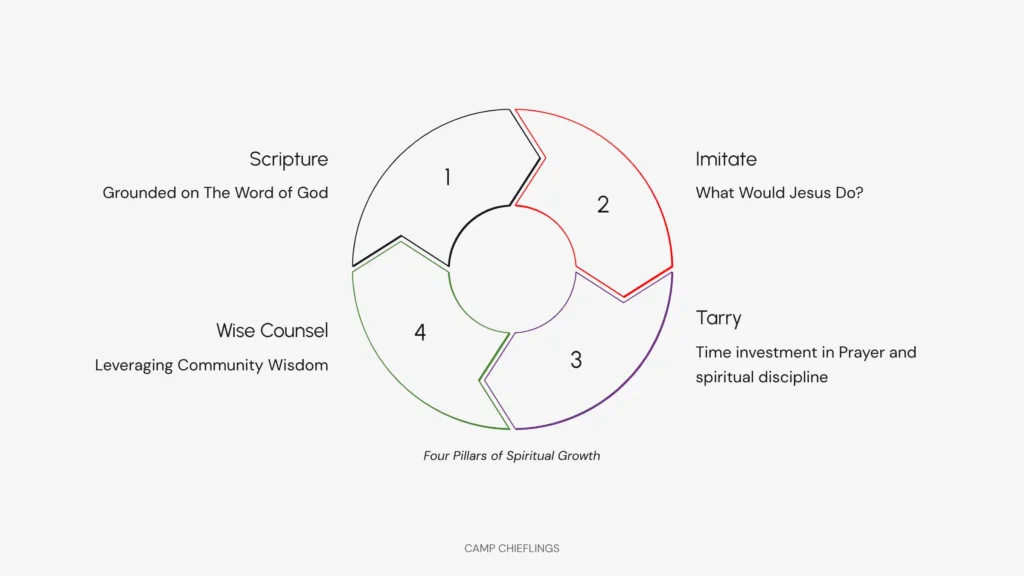Picture this:
It’s mid-afternoon, your inbox is overflowing, your focus is fading, and no amount of caffeine seems to help. You tell yourself to push through, but deep down, you know that strategy stopped working a long time ago.
If you’ve ever felt stuck in that endless loop of exhaustion and guilt, you’re not alone. The problem isn’t your work ethic—it’s your approach.
Here’s the truth most productivity advice won’t tell you: you’re not a machine, and you shouldn’t try to operate like one.
Why “Hustle Harder” Isn’t the Answer
Ironic, isn’t it?
In a post about staying productive without burning out, the first emphasis is that you are not a machine. You would tire out. Even machines eventually do.
Starting off this article this way is intentional.
To be productive (and optimize your energy), you need to, first, realize the pressing daily demand for your energy, acknowledge the limited supply of it, and then treat each of them with the care and respect they deserve.
Real productivity is about working smarter, not just harder. It’s about understanding your natural rhythms, protecting your energy, and building systems that last.
The following strategies are grounded in scientific research and real-world results, providing steps you can apply immediately to build a sustainable, productive routine.
Spoiler: They’ll help you sustain your focus, maintain motivation, and optimize performance without the crash.
- Strategy #1: Master Your Energy Peaks (Not Just Your Time)
- Strategy #2: Move Your Body to Fuel Your Mind
- Strategy #3: Choose Your Thoughts, Manage Your Stress
- Strategy #4: Work in Focused Bursts, Not Marathon Sessions
- Strategy #5: Break Down Big Tasks Until They’re Ridiculously Small.
- Strategy #6: Build Momentum with Micro-Wins
- Strategy #7: Protect Your Energy with Healthy Boundaries
Strategy #1: Master Your Energy Peaks (Not Just Your Time)
Energy management beats time management every time.
It’s not just about when you work—it’s about working when you’re most alert, creative, and focused. But here’s the catch: if you’re fighting against your body’s natural rhythms, you’re swimming upstream and expending more energy.
The outcome is certain: Burnout.
Everyone Has Different Peak Performance Hours
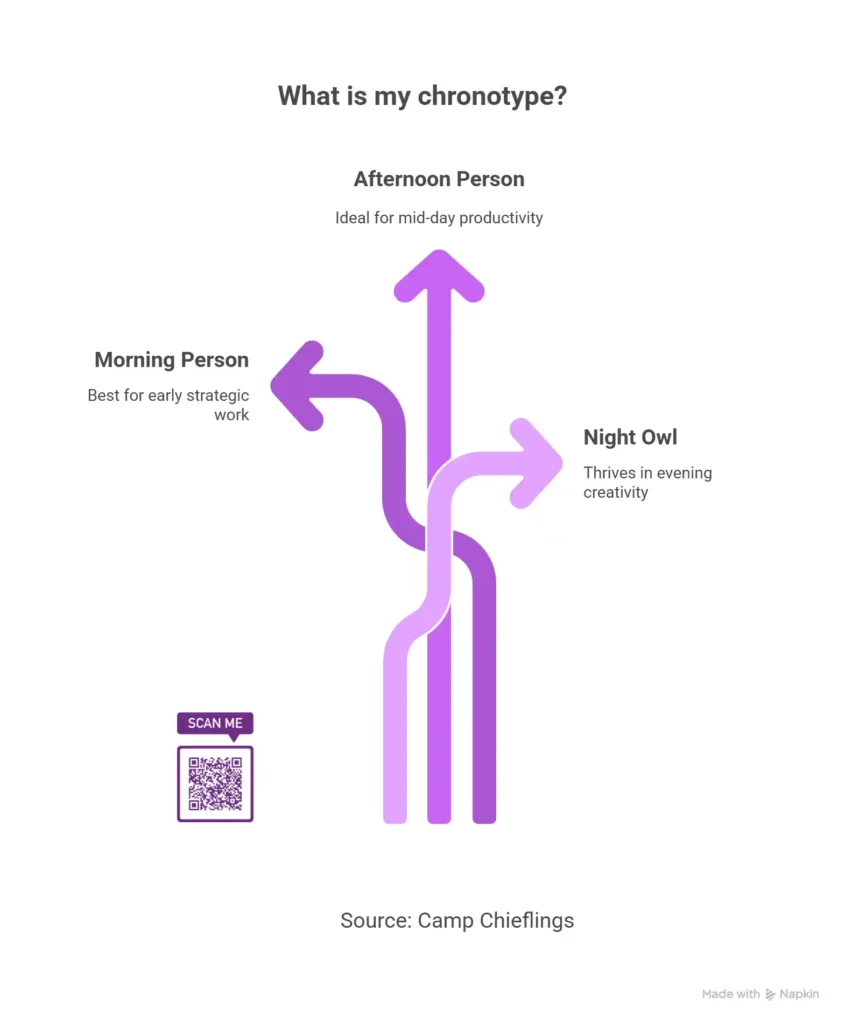
Scientists call these natural patterns chronotypes. The term is used in reference to your biological preference for when you feel most awake and productive throughout the day.
- Morning people (about 15% of us) hit their stride early and crush strategic work before lunch
- Afternoon people (the majority, around 55%) perform best from late morning through early afternoon
- Night owls (another 15%) come alive in the evening and do their best creative work after sunset. I would typically place myself in this category. Though it has its costs. I write most of the blog articles on this site in the cool of the evening and end up sleeping late. Late to bed, late to rise, and rise grumpy.
Research shows that professionals who align their work schedules with their natural chronotypes experience higher productivity and significantly improved well-being.
Pro tip: Reduce intake of caffeine during this tracking week. You want to see your natural energy patterns, not chemically-induced bumps.
Working with your chronotype instead of against it is one of the fastest ways to unlock hidden productivity. Stop fighting your biology. Start leveraging it.
Strategy #2: Move Your Body to Fuel Your Mind
The second strategy on this list is based on The Principle of Exertion: that by exertion —through training and testing, one builds capacity.
So to build some form of stamina for sustained impactful work, embrace hard work and put yourself to the test. Abominate laziness.
When your brain feels fried, your immediate instinct might be to rest. But the paradox in nature is that long-term results supercede short-term relief or gratification. Sometimes feeling tired doesn’t mean you need rest—it means you are not testing yourself enough.
The research is clear: the benefits of light to medium intensity exercise include reduced fatigue and stress, improved focus and mood, enhanced memory and thinking capacity for hours afterward. Exercise doesn’t just build muscle—it builds brainpower and directly impacts cognitive performance.
The key is finding balance; knowing when to work and when to rest, defining the lines between laziness and lack of self-care.
Next time you feel tired, resist the urge to collapse. Take a short walk outdoors instead. Your brain will thank you with sharper thinking and renewed energy.
Strategy #3: Choose Your Thoughts, Manage Your Stress
Psychologist William James once said, “Your ability to manage stress lies in being able to choose one thought over the other.”
Crystallize Your Learning
Stress is inevitable. Deadlines loom. Projects pile up and expectations mount.
But here’s what you can control: how you respond to that stress. Your response determines whether it fuels focus or feeds burnout. These are the fine lines people miss that bring pain. Most times and for most peole, these emotional responses happen subconsciously.
The Antidote: Cognitive Reframing
Cognitive reframing is the art of choosing how you interpret challenges. It is what informs the difference between unhealthy stress and healthy exercise.
Instead of spiraling on “I’ll never finish this,” cognitive reframing shifts it to “I’ll take it one step at a time.” Replace “This is impossible” with “This is challenging, but I’ve solved difficult problems before.”
Where people are overwhelmed and losing their composure over a challenging work situation, you’d still have the equanimity to get productive work done because you consciously chose how you would respond.
Research shows that these simple mental shifts lower anxiety and sharpen decision-making by the operation of the amygdala (stress-response center) and the prefrontal cortex (rational center). You can find a seminal work demonstrating this effect here: Rethinking feelings: An fMRI study of the cognitive regulation of emotion.
You can’t control every circumstance, but you can control where you direct your attention—and that makes all the difference.
Related: Find more on strengthening your mental framework..
Strategy #4: Work in Focused Bursts, Not Marathon Sessions
Your brain isn’t built for marathon work sessions. This is why Continuous Work, when depleted, Decreases Productivity.
Someone needs to hear this:
Working without breaks is not a flex. It is poor stewardship.
Amadi Achinike
Mental fatigue sets in. Attention fragments. Stress compounds. Mistakes multiply. The quality of your output plummets. To make matters worse, you put in more hours. No results or reward for time spent.
So what’s the solution, Archie?
Listen, the information you’re about to receive would transform your work (and life) if you deploy the right attitude and take the relevant actions.
Ready?
Enter Strategic time-blocking with built-in recovery.
The Power of Time-Boxing (The Pomodoro Technique)
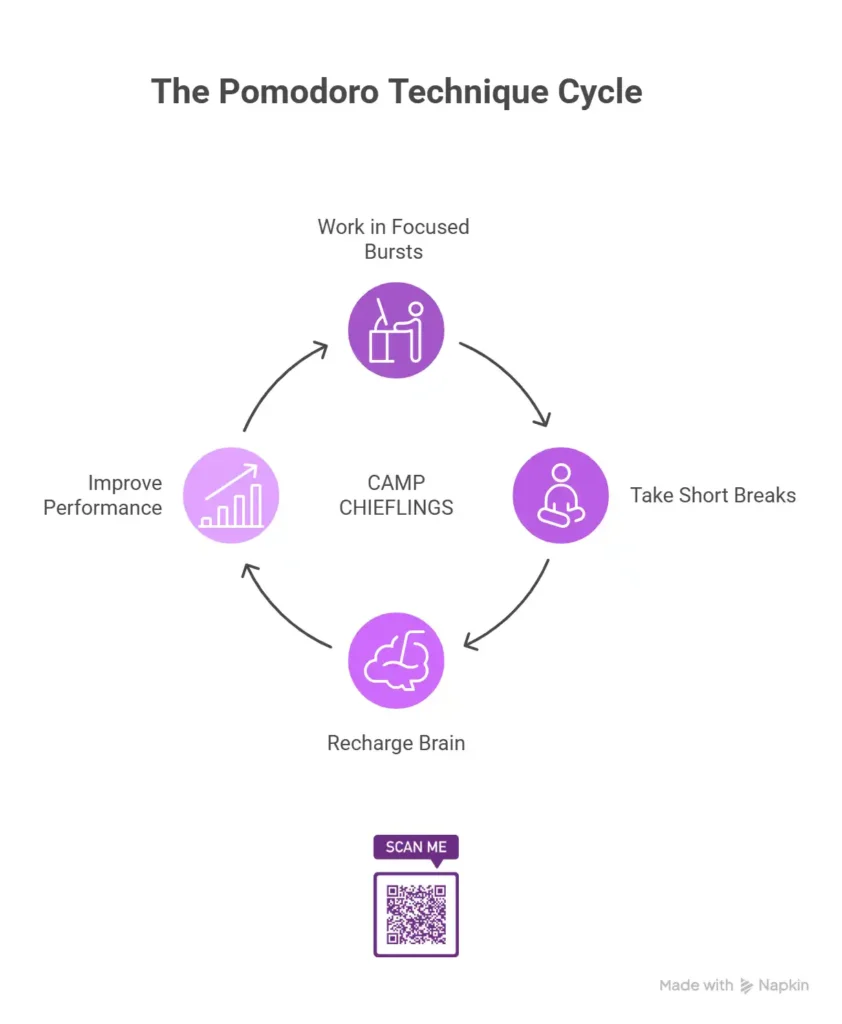
The Pomodoro Technique was developed by Francesco Cirillo in the late 1980s as a method to break work into focused, timed intervals separated by short breaks. It’s simple, but remarkably effective.
During breaks, step away from your screen. Don’t scroll social media. Instead: stretch, sip water, breathe deeply, or step outside for fresh air.
Research shows that strategic breaks help the brain recharge, restore focus, and improve long-term performance. That’s why it works. Short mental resets prevent the fatigue that causes careless errors and decision fatigue.
Strategy #5: Break Down Big Tasks Until They’re Ridiculously Small.
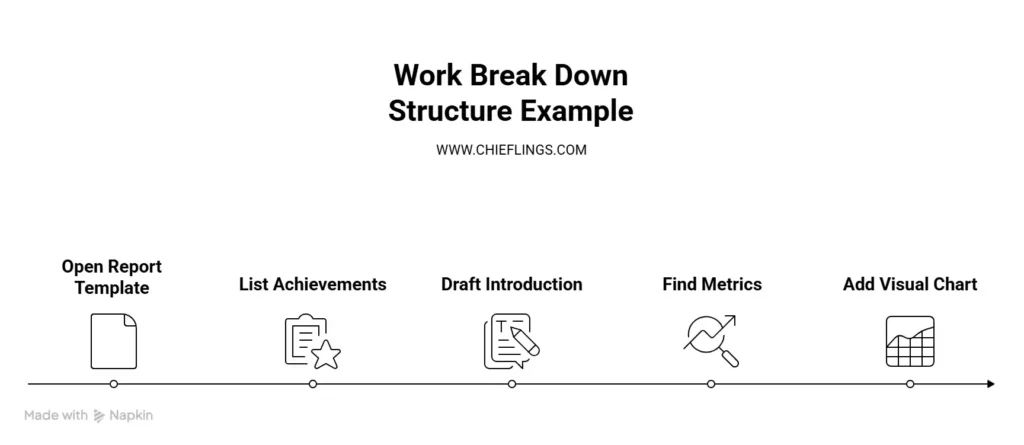
Ever opened a huge project and felt instantly paralyzed?
That’s your brain reacting to ambiguity. Vague tasks trigger avoidance because your brain can’t calculate the effort required, so it perceives the entire task as overwhelming.
The Antidote: Make Every Step Painfully Clear
Break big projects into micro-tasks so small they feel almost embarrassingly simple. This is classic in project management.
Apply the 2-Minute Rule: If a step takes less than two minutes, do it immediately.
Research shows that clarity reduces cognitive load, which dramatically increases the likelihood of task completion. When the next action is obvious, procrastination has nowhere to hide.
Real-world example:
Instead of: “Work on quarterly report” (high level, vague, and overwhelming)
Break it down:
- Open report template (2 minutes)
- List three main achievements (5 minutes)
- Draft introduction paragraph (10 minutes)
- Find supporting metrics (15 minutes)
- Add visual chart (10 minutes)
Suddenly, that intimidating project becomes a series of doable steps. You’re not facing a mountain—you’re taking a walk up small, manageable hills.
For more on goal-setting and execution, breaking things down is the foundation.
This is how you trick your brain into starting. And once you start, continuing becomes exponentially easier, which leads us nicely to the next strategy.
Strategy #6: Build Momentum with Micro-Wins
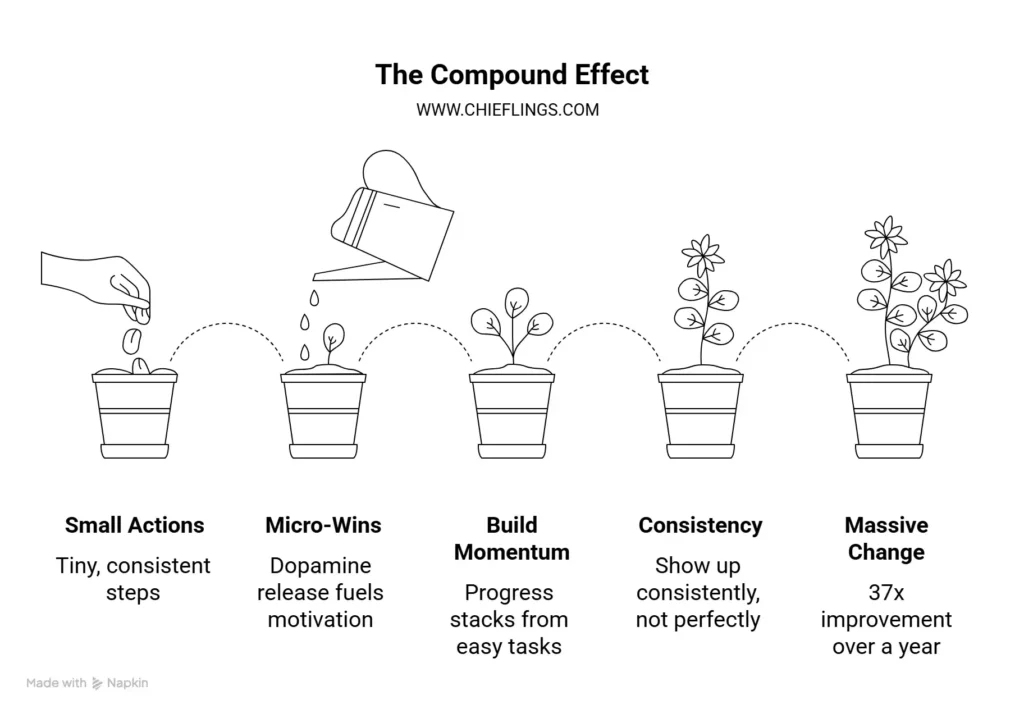
The Compound Effect of Small Daily Actions
Success rarely comes from massive leaps. It’s built from tiny, consistent steps. This is the compound effect in action.
Micro-wins—completing one slide, sending one key email, organizing your desk—create a dopamine release that fuels motivation and makes the next task feel easier. Momentum builds on itself.
Momentum matters more than intensity. Start with something easy, then stack progress from there. The key is consistency, not perfection.
Productivity expert James Clear explains in Atomic Habits: improving by just 1% daily compounds into 37 times improvement over a year. That means if you get slightly better at time management each day, you’ll be dramatically more productive within 12 months—without burning out.
Small habits compound into massive change. Don’t underestimate the power of just showing up consistently.
Strategy #7: Protect Your Energy with Healthy Boundaries
You can’t pour from an empty cup. Boundaries are how you refill it.
You might dislike the word, boundaries or what it implies for one reason or the other. But when you realize how precious and limited your personal resources (time, peace of mind, energy, focus, willpower, etc) are, there is a call of responsibility to protect and take care of them.
Without guardrails, your energy leaks everywhere—endless meetings, late-night emails, back-to-back tasks, constant notifications. You drift into over-commitment, all-nighters, and chronic fatigue. Remember when I said being a night owl cost me a bit?
This is the reason: I hadn’t built the necessary boundaries around work and my personal resources. And if I am being honest, it’s still a work in progress.
However, judging from the experience thus far, I can say the rewards have been remarkable. The renewed sense of control over what goes on in my life has abated anxiety and reinvigorated my focus on what truly matters.
Quickly, here is how to Take Back Control
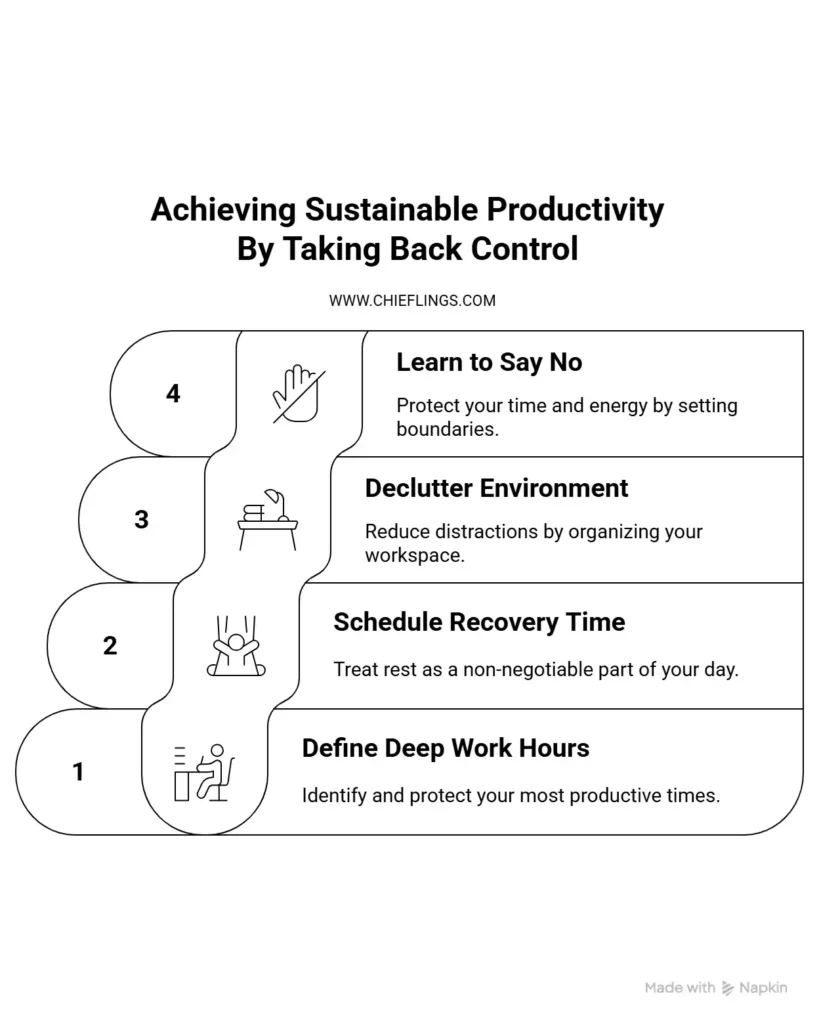
Define your deep work hours and protect them fiercely:
Schedule recovery time the same way you schedule meetings—make it non-negotiable:
Declutter your environment to reduce mental noise:
Learn to discern when to say “no” and how to do it without guilt. Saying no to the wrong things protects your yes for the right ones.
This Research shows that professionals who enforce work-life boundaries report higher satisfaction and 25-40% better long-term productivity. Setting boundaries isn’t selfish—it’s sustainable.
The sweet paradox of boundaries: by doing less, you accomplish more.
Curated For You: Boundaries by Henry Cloud
Conclusion: Work Smart, Feel Strong
Productivity isn’t a race—it’s a rhythmic dance; a journey of optimizing personal resources to meet work demands.
When you align your habits with how your body and brain actually work, burnout stops being inevitable. You start producing more by doing less—but with greater focus and joy.
Here’s your challenge: Pick one strategy from this list and practice it daily for one week. Just one. Tiny shifts done consistently create lasting results.
Because at the end of the day, productivity isn’t about grinding—it’s about growing. It’s about choosing:
- Energy management over time management
- Momentum over perfection
- Boundaries over burnout
Work smarter, not harder.
After all, productivity isn’t an end in itself—it’s a vehicle to help you achieve your goals while still enjoying the journey.
Ready to Level Up Your Personal Leadership?
If you found these productivity strategies helpful, you might also enjoy:
- Hacking Human Performance: Principles for Personal Success
- Self-Leadership Tips for Sustainable Success
- New Year Planning: Setting Goals That Stick
What’s the one strategy you’ll implement this week? Let us know in the comments below.
